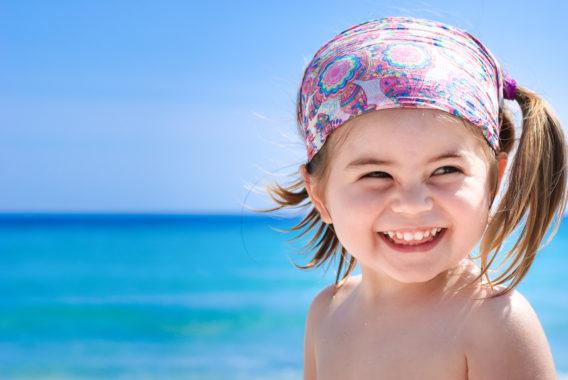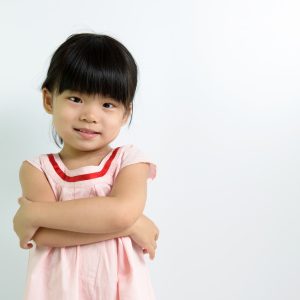
All toddlers are unique, as are their parents and families. This often really strikes parents when they have a second child who is very different from their first. In order to help you understand your toddler’s personality and put your observations of their temperament into context, I have outlined some of the major factors that shape toddler personality.

Gender effects on toddler personality are massively overstated and stereotyped in most cultures around the world. The toddler brain and toddler development actually overshadow most differences between the sexes at this age. However, if you look at large groups of toddlers, you’ll start to see some difference in behaviour between toddler boys and toddler girls.
Paediatrician Dr. Mary Sheridan, in her seminal book on child development, reported that girl toddlers are more likely to:
She reported that boy toddlers are:
The toddler years are not a time to get hung up on statistical differences between boy toddlers and girl toddlers. Don’t let these trends influence your expectations of boys or girls and try not to contribute to stereotypical beliefs about girls and boys – for example, while there are no significant gender differences in terms of whether boys or girls walk earlier, parents statistically and consistently overestimate their boy’s walking skills and consistently underestimate their girl’s walking skills. Try not to limit your toddler in this way.
I think there is a huge and increasing problem in gender stereotyping children earlier and earlier, and it is driven by marketing and consumerism. When I was a child in the 1970s and 1980s there were more limited clothing options and toys like Lego were marketed to all children, not just one group or another based on gender. Fast forward to today and when you walk into a children’s clothes shop or toy department it’s like an apartheid. If you want to choose non-pink clothes for your daughter, you will need to go into the ‘boys’ section. Even more insidious, in my opinion, is the way that toys about science and building are often put in the branded boys’ section and the toys about art and creativity are put in the branded girls’ section. Although it is driven by a desire to maximise profits it limits children and reduces their freedom to explore the world as a child, rather than a boy or a girl. So don’t be afraid to dress your daughter in dinosaur t-shirts or let your son play with cooking toys.
When preschool children used to visit my laboratory to take part (with their mum) in experiments, I would let them choose a toy as a thank you at the end of the visit. Interestingly, girls were generally allowed to choose any present they wanted but boys frequently picked up a doll and they were always (literally always) told to put it back and choose something else.

There are a lot of stereotypes about birth order that can be limiting to an individual. However, Sullaway’s famous book about birth order reported longitudinal studies of children and researchers have found some consistent differences between firstborn children, middle children, and last-born children.
In brief, firstborn children are thought to relate primarily to adults and seek their approval above that of all others. For this reason, firstborn children are more likely to be obedient and conservative. Last-born children have a whole ready-made family that they need to find their role within as they develop and grow. They try to find a niche that isn’t already taken so are more likely to be rebellious. In addition, you will find that you are more relaxed with your later-born child than with your first and probably experienced the same inconsistency in your own family. The eldest had the most restrictions on their behaviour and your parents were more permissive with each subsequent child. It’s as if parents ‘practice’ on their firstborn and calibrate their parenting as they have subsequent children.
For example, parents tend to wean their later babies differently than their first baby. Parents can be very nervous about starting solids with their first child and read lots of books and worry about each meal. By the time they have a second or third baby, feeding the family can be so hectic that there’s no time to fret and worry in the way you did over their first, especially as they have lots more experience of weaning by then.
Another big difference between firstborns and later-born children is the general lack of scheduled events in the lives of the later toddlers. Whereas firstborns are taken to swimming, craft and yoga classes, later-born children have to fit around the family’s schedule and may spend their mornings accompanying their big sister on the school run. There are actually lots of positives to this.
These differences will play out with your toddler and you will recognise these patterns in your own family.

Toddlers come in all shapes and sizes and their temperaments are similarly wildly varied. Developmental psychologists have reported persistent differences in the temperament of babies as young as three months old. These personality or temperamental differences appear fairly hardwired and tend to persist through childhood. It’s important that you learn to respect and understand your baby’s unique personality.
On the spectrum of outgoingness, there are extremely introverted and shy toddlers all the way to extremely extroverted and brazen toddlers. A simple rule of thumb is that extroverts tend to be energised by groups and introverts tend to find large groups of people tiring and overwhelming. If you go to a birthday party, is your toddler the loud one racing about or is your toddler on the periphery looking overwhelmed? This is a simple litmus test of outgoingness. Extroverts are energised by people, groups, and noise: it’s like fuel and an inspiration to them. Conversely, introverts may be social and friendly but they feel drained by large groups of people. Their fuel, creativity and drive comes from within. There is no right or wrong way to be and both introverts and extroverts can be happy, successful and enjoy good friendships. In Western countries, extraversion is often more highly prized and individuals and parents sometimes feel they need to change themselves and their children into extroverts. Although it is important to encourage your child to be confident and speak up in social situations, it’s important to remember that some of the biggest thinkers and contributors to Western society have been introverts e.g., Albert Einstein, Rosa Parks and Bill Gates. This is hardly surprising when you remember that between 30-50% of people are rated as introverts in personality tests. Introverts are not necessarily shy, they may just be more self-contained and content when alone.

One persistent spectrum of temperamental difference in toddlers is similarly wide when it comes to physical timidity and boldness.
Brain imaging studies have found that bold, fearless children appear to have a less sensitive amygdala (this is an ancient part of the brain that makes us take action when we are in danger). These bold children are pretty unflappable, happy to approach strangers and tend to be risk-takers. This can be exhausting as a parent as it may feel as if your toddler has no ‘common sense’ and their exploits can be pretty nerve-wracking.
In contrast, timid risk-avoiding children appear to have a more sensitive amygdala so they may feel overwhelmed by a stimulus e.g., a firework that hardly even registers in a bold child’s brain.
Again, there are costs and benefits to these temperamental differences, which is why you still find a variety within populations. In evolutionary terms, sometimes being bold pays off e.g., if you dare to stay out and forage while predators are around you will take in more calories than those that forgo food. However, sometimes taking that risk might be a deadly decision and the more timid individuals live to forage another day whereas the bold individual blew it.
So try not to see these differences as good or bad, they are just differences.
If you have a bold, fearless toddler you will need to encourage her to stop and think and be safe. Whereas if you have a timid and fearful toddler you will need to encourage her to take risks, enjoy new physical feats and get used to some uncertainty and risks.
You don’t need me to tell you that it is completely normal for toddlers to be full of energy and loud and boisterous. However, even amongst toddlers, some members seem to be even louder and even more boisterous than their peers. The parent of the boisterous toddler is the one who never gets to sit down and sneak a restorative cup of tea at the playgroup. Although their energy can be infectious, there are times when it can also be exhausting.
It is wonderful to see the free energy and enthusiasm that a boisterous toddler exhibits. However, if you have a very energetic toddler I recommend even more outside play than other toddlers need. Central to this play should be lots of opportunities to take safe risks, e.g., climbing on the climbing frame at the park. So many of us live very sedentary lives and we all tend to underestimate how much exercise and fresh air our children need. In some ways, you need to be as disciplined with giving your boisterous toddler lots of fresh air in much the same way as a dog owner does about adequate walking!
Sadly it can really ruin your day to see the disapproval of strangers in your peripheral vision when you are out and about with your Tiggerish toddler. This sense of feeling judged and like a failure can be even more intense if the disapproving adult is a grandparent or elderly neighbour. However, we are not living in the Victorian era now where adults truly believed that children should be seen but not heard. As a society that happily keeps toddlers in little ghettos away from the serious worker adults, I think we all need to be a bit more realistic about the needs of toddlers who are part of our society. We have pretty deluded ideas about how long a toddler can realistically sit still and be quiet for. When it comes to a particularly boisterous toddler it can feel impossible to share public space with some adults (who think that public space is adult space and babies, toddlers, teenagers and even the elderly are not really welcome). In the UK parents can feel very unwelcome by this rude behaviour from other adults.
Try not to take it personally; you can’t respect someone’s opinion if they truly believe that a toddler should act just like an adult. Children are not adults and even the most disapproving adult was a toddler once!
Although adults need a bit of a reality check about toddlers, for the most part, all children need to begin to learn there are times when they need to talk more quietly, or walk rather than run. Even if you have a boisterous toddler, they need to be careful around an elderly person who might be very nervous of falling, for example.
Toddlers need us to regulate their emotions and in fact, we have to ability to do something quite amazing. When we talk calmly and slowly and slow down our breathing, our toddlers will subconsciously copy us. This is called ‘matching’ behaviour and is amazingly powerful. It’s the same as when we as adults are talking to someone we like – we tend to match and copy patterns of breathing, posture and movement.
By modelling calm and slow breathing, your toddler will subconsciously calm down, whereas if you scream, cajole and hyperventilate you will just end up winding both you and your toddler up.
While it is normal for toddlers to be full of energy and chutzpah, some toddlers will be much more quiet, anxious and nervous than their peers. As explained above, it appears that this ‘behavioural inhibition’ may be down, in part, to having a sensitive amygdala that fires a warning at a lower threshold than in other bolder individuals. In his book “Galen’s Prophecy,” Harvard developmental psychologist Jerome Kagan termed this temperamental behaviour ‘behavioural inhibition’ and reported stable temperamental difference in babies as young as three months old. He ran longitudinal studies where children would come to his laboratory every few years to play games and complete tasks.
To assess behavioural inhibition he had stimuli such as a robot with bright flashing lights and whirring noises. Whereas the bold children ran to investigate the novel and loud toy, the more behaviorally inhibited children displayed fear and avoidance of the robot.
If you have a cautious toddler you will need to be respectful and patient with her. Don’t force her to do things that scare her – instead, approach novel situations with baby steps. If they hate the music group full of toddlers banging drums, respect the fact that your toddler finds the noise overwhelming (don’t we all!)

In my research, I gave children fearful tasks to complete. The parents who were the most sensitive and successful with their children on this task were the ones who felt no ‘performance anxiety’ towards me as a researcher and instead remained child-centred. They offered to do the task first and constantly reassured their child. I learned a lot from those low anxiety and sensitive mothers about leading from the front and not worrying about being ‘seen to parent’. Parenting is not a spectator sport but we are social creatures and we constantly worry about how other people appraise our toddlers (e.g., she’s a wimp) and how we appear as parents (e.g., over-indulgent mother). It will really help you and your toddler if you can switch off this internal critic (who is driven by performance anxiety). It’s hard enough to look after a toddler without having the extra layer of social stress to ‘be the perfect parent with the perfect child’. This kind of performance anxiety instead sabotages your ability to parent your toddler effectively as you lose connection with them and what they are experiencing and feeling.
Kagan, Snidman, Arcus & Resnick (1994) Galen’s prophecy: Temperament in human nature. New York, NY, US: Basic Books.
Sheridan M. 2008. From birth to five years: children’s developmental progress. London: Routledge.
Sulloway (1996) ‘Born to rebel: Birth order, family dynamics, and creative lives.’ New York, NY, US: Pantheon Books.